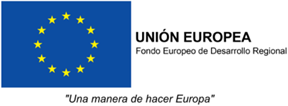New method to improve treatment of atrial fibrillation
-
Atrial fibrillation (AF), one of the most frequent types of arrhythmias, affects more than 30 million people worldwide and, in Spain, it is estimated that there are more than 600,000. In addition, it is also estimated that around 37% of the world's population over the age of 40 will suffer from it in their lifetime. Ablation (isolation of the pulmonary veins of the left atrium) with a catheter, aimed at isolating the pulmonary veins of the left atrium, is the conventional therapy for this disease when it does not respond to drug therapy. However, ablation offers suboptimal results in complex cases of AF because other regions of the atria, beyond the pulmonary veins, are also relevant to the maintenance of the arrhythmia. This is especially true in cases of persistent AF with months or years of evolution.
Researchers from the CNIC and HCSC have developed a system to guide ablation procedures in a patient-specific way in complex cases of persistent atrial fibrillation, identifying these key regions to be treated with great precision and specificity. Furthermore, it does not require additional equipment or consumables, but only software that could be implemented within any conventional electroanatomical browser, so it would not make current pulmonary vein isolation procedures more expensive, with the advantage of being able to perform patient-specific ablation in complex cases.
The intellectual property developed in CNIC (related to this project) to efficiently identify and target atrial fibrillation drivers during persistent atrial fibrillation is under further clinical assessment in the ongoing TAILOR-AF study (NCT05169320) conducted at the Hospital Clínico San Carlos (co-owner of the intellectual property). The main objective of this study is to identify (via iAM/iFM maps), target and ablate atrial fibrillation leading drivers in patients with symptomatic persistent atrial fibrillation recurrences despite ≥2 previous pulmonary vein isolation procedures. The methods include a percutaneous catheter mapping and ablation approach followed by a minimally invasive surgical approach via thoracoscopy, if necessary. As a secondary objective we will study the association of underlying blood biomarkers, atrial imaging and surface ECG parameters, with advanced remodeling stages requiring a surgical approach to target leading driver regions. This study illustrates the strong motivation of the laboratory to achieve clinical impact with the research activities performed in animal models.
NumberEP3863510B1; US17/284,195Priority date11/10/2018ApplicantsCNIC, HCSCInventorsJorge García Quintanilla, David Filgueiras Rama, Nicasio Pérez Castellano, Julián Pérez-Villacastín Domínguez






